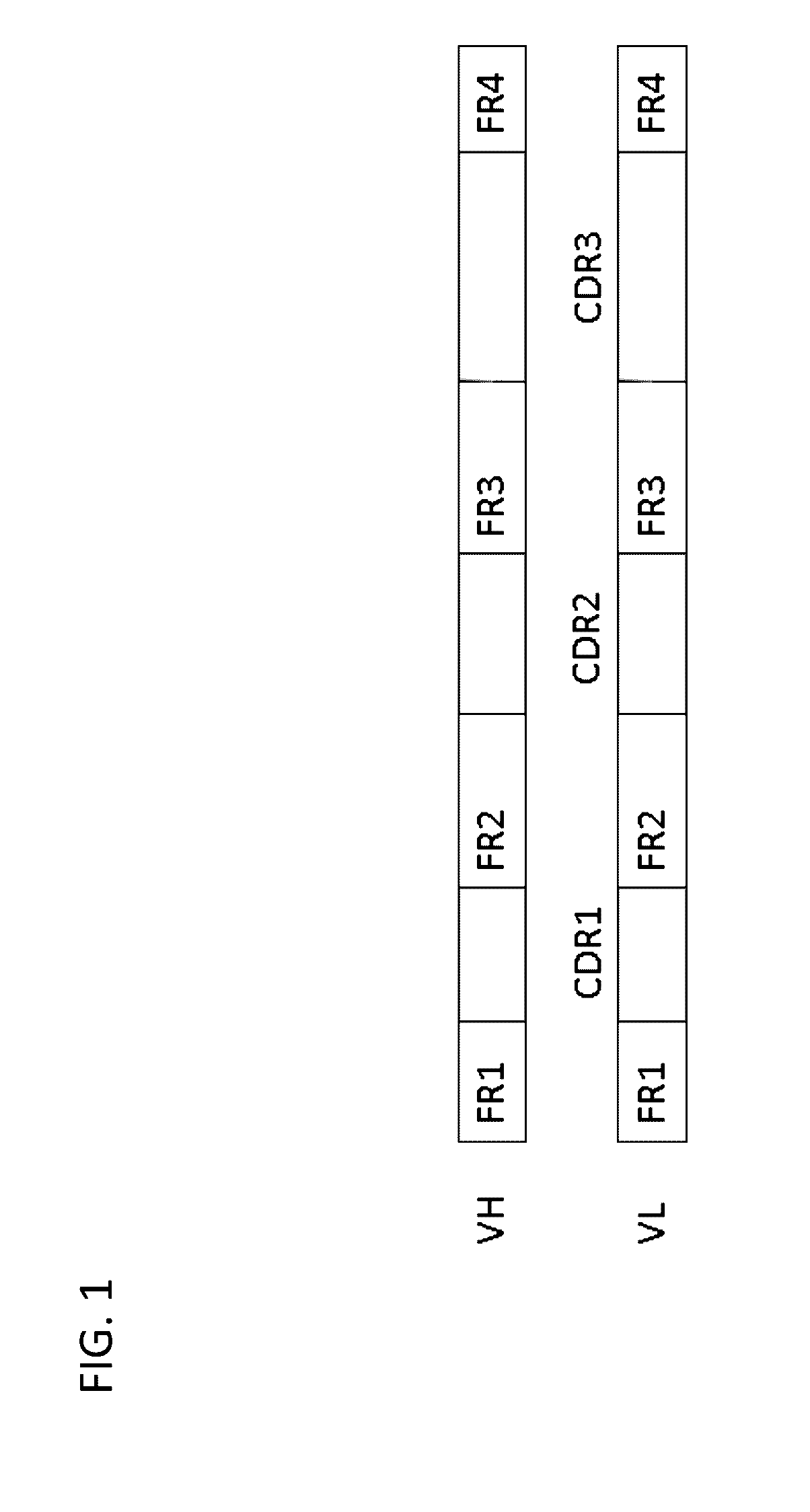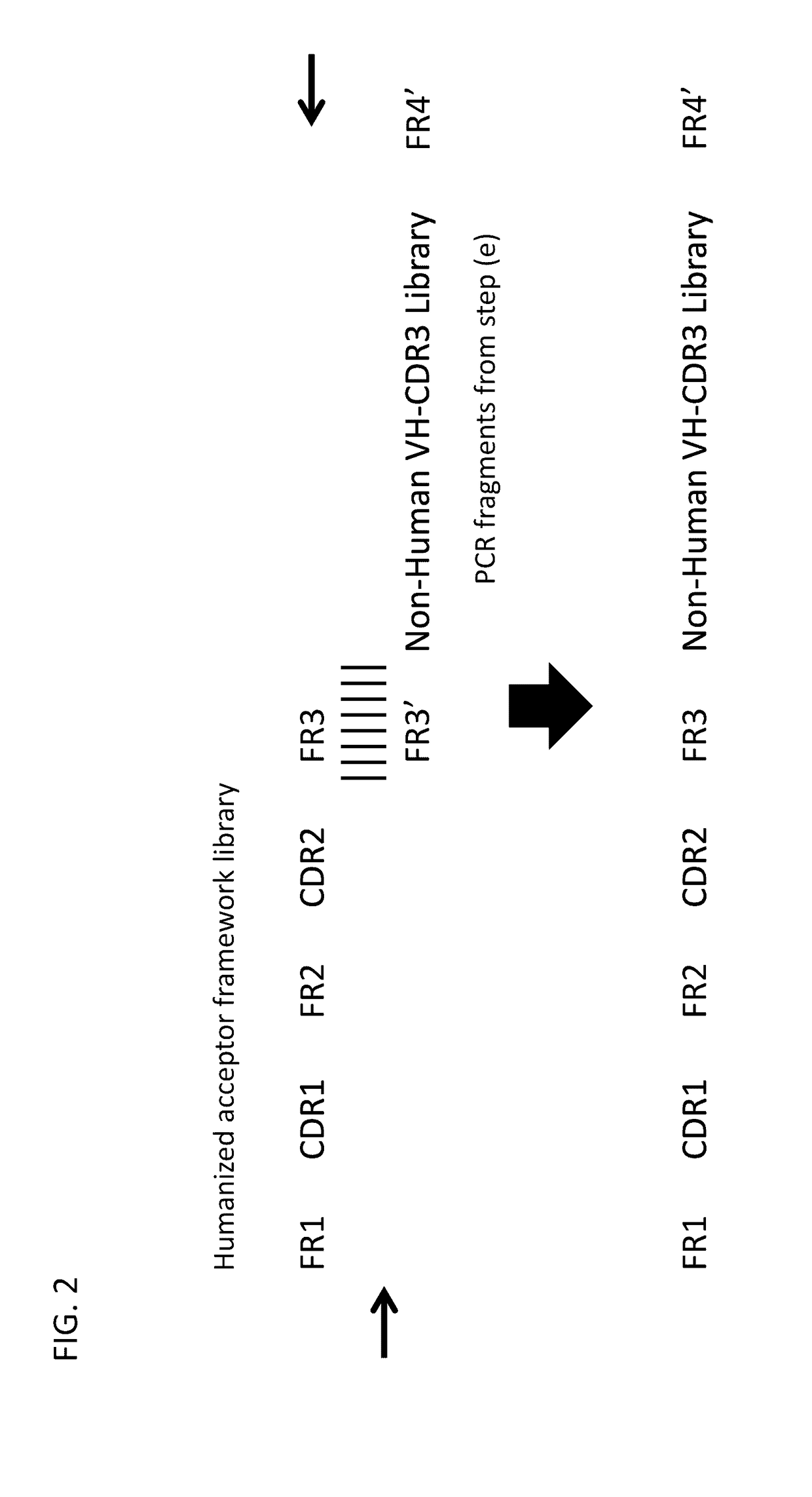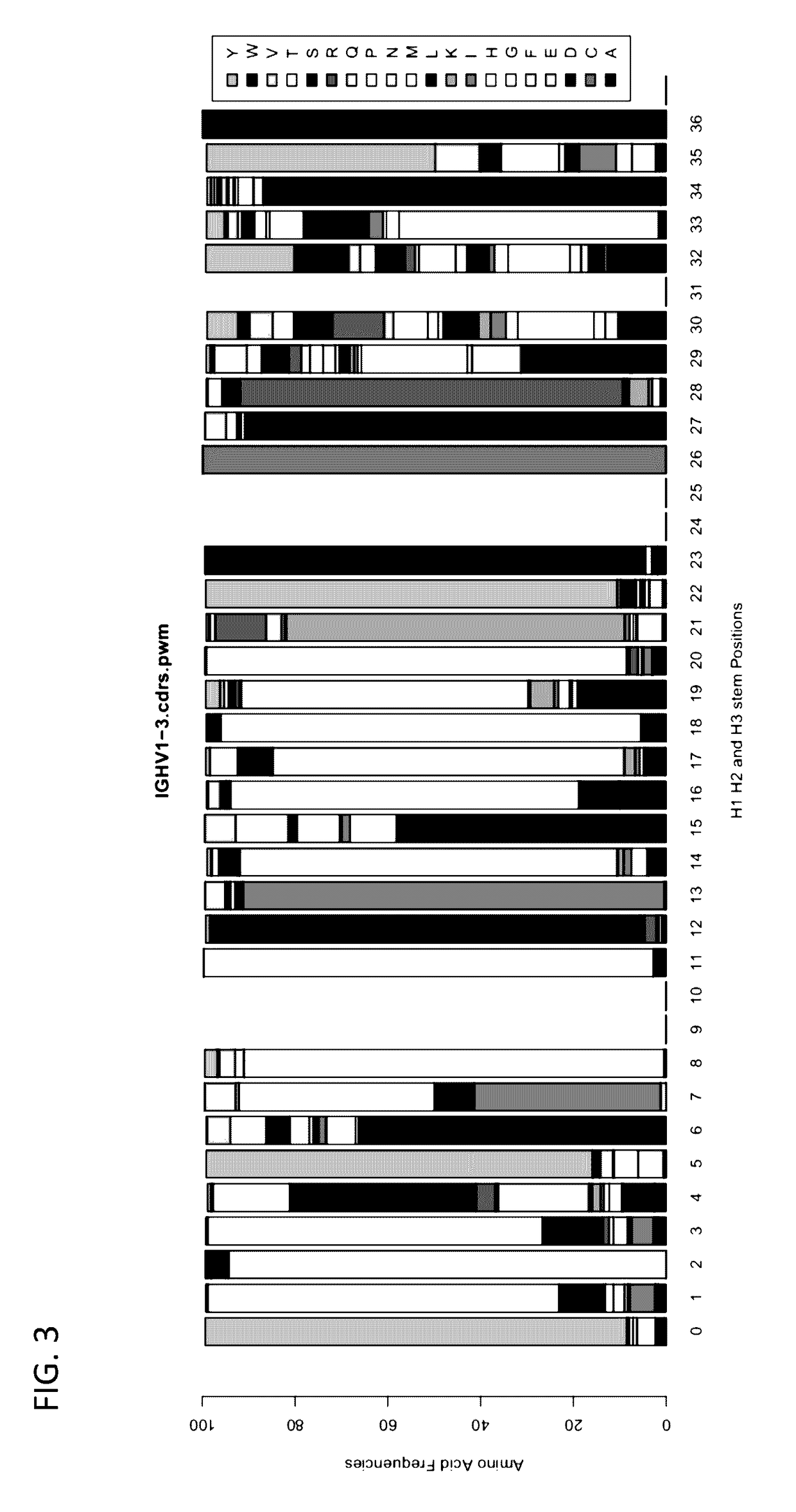Method for mass humanization of non-human antibodies
a non-human antibody and humanization technology, applied in the field of humanization methods of non-human antibodies, can solve the problems of unsatisfactory immune response, limited selection of human templates supporting donor cdrs, and polyclonal nature of natural immunoglobulins, etc., and achieve the effect of quick and/or effective humanization of antibodies
- Summary
- Abstract
- Description
- Claims
- Application Information
AI Technical Summary
Benefits of technology
Problems solved by technology
Method used
Image
Examples
example 1
The Generation of Humanized Antibodies
[0359]The generation of humanized antibodies can performed by the following steps:
[0360](a) Immunization of a non-human species.
[0361](b) Lymphocyte preparation from different organs (e.g. spleen, bone marrow, or blood).
[0362](c) RNA isolation from lymphocytes.
[0363](d) Separate PCRs of non-human VH and VL variable regions.
[0364](e) Separate nested PCRs of non-human VH and VL CDR3.
[0365](f) Cloning of VH and / or VL CDR3s into acceptor framework libraries to generate humanized VH and VL fragments.
[0366](g) Cloning of obtained humanized heavy chain, humanized light chains, or humanized scFv into a phage display vector.
[0367](h) Selection for specificity on antigen.
[0368](i) Characterization of individual antibodies.
[0369](j) Optimization based on characterization of successful antibodies and less successful antibodies.
[0370]In order to generate the appropriate Acceptor Frameworks, the non-human V-gene scaffolds are compared to their human counterpa...
example 2
Determination of Appropriate Receptor Frameworks for Murine Antibodies and Characterization of their Frequencies
[0378]Germline V gene segments from mice can be compared to germline V gene segments from humans to identify preferred acceptor frameworks. Multiple germline mouse V gene segments can be mapped onto individual germline human V gene segments, thereby funneling much of the mouse immunoglobulin repertoire towards particular preferred acceptor frameworks.
[0379]RNA from murine lymphocytes can be isolated and the sequences of the immunoglobulins genes determined. The frequencies of the different light-chain immunoglobulin and heavy-chain immunoglobulin V gene segments that map to each human germline V gene segment can be determined. For example, multiple mouse V gene segments that map onto the human acceptor V gene segment IGHV1-3 can be found in the sequences assayed. An exemplary PWM for human immunoglobulin IGHV1-3 CDR sequences is illustrated in FIG. 3.
PUM
| Property | Measurement | Unit |
|---|---|---|
| diameter | aaaaa | aaaaa |
| diameter | aaaaa | aaaaa |
| angle | aaaaa | aaaaa |
Abstract
Description
Claims
Application Information
 Login to View More
Login to View More - R&D
- Intellectual Property
- Life Sciences
- Materials
- Tech Scout
- Unparalleled Data Quality
- Higher Quality Content
- 60% Fewer Hallucinations
Browse by: Latest US Patents, China's latest patents, Technical Efficacy Thesaurus, Application Domain, Technology Topic, Popular Technical Reports.
© 2025 PatSnap. All rights reserved.Legal|Privacy policy|Modern Slavery Act Transparency Statement|Sitemap|About US| Contact US: help@patsnap.com



